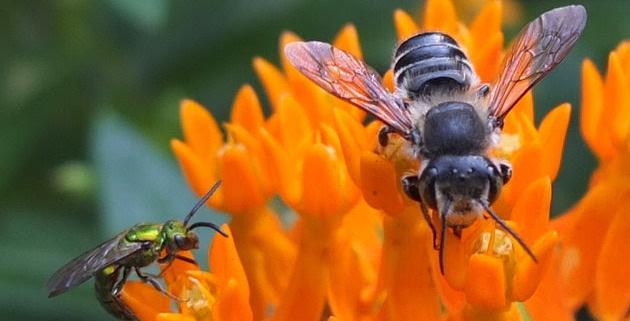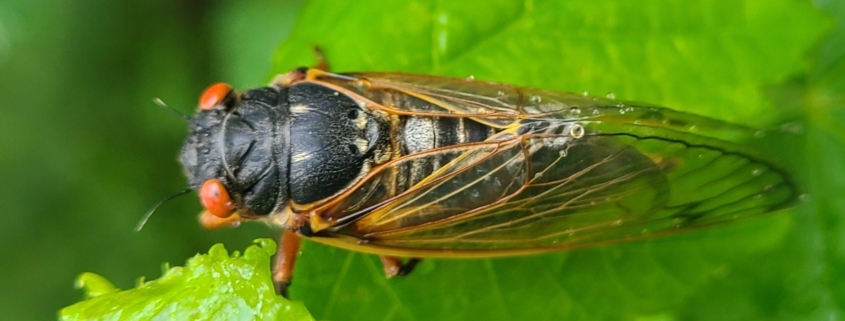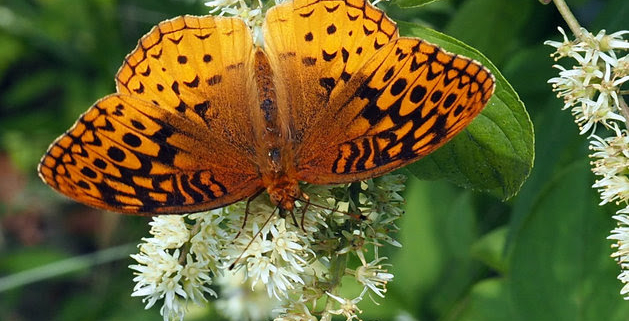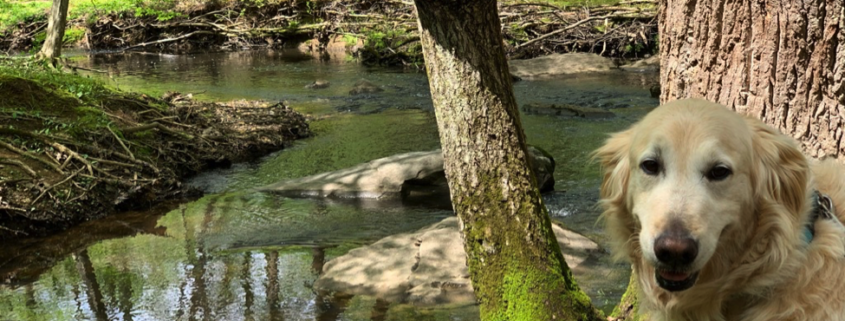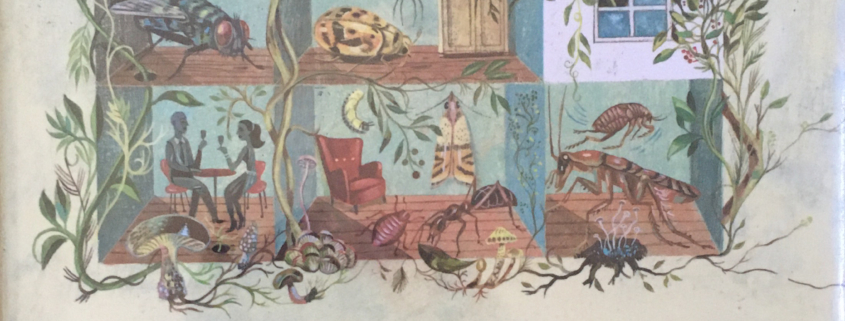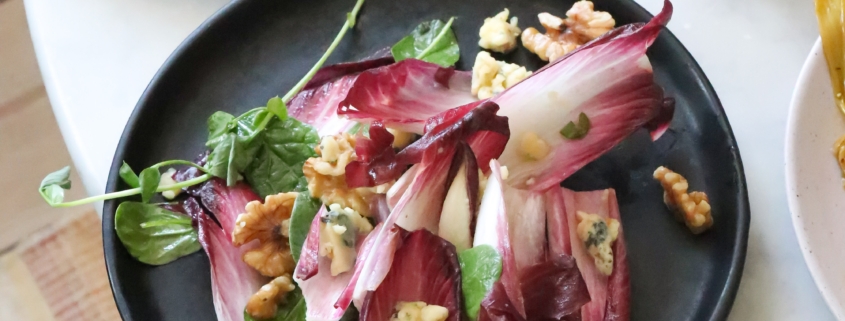Planting for the Picky Eaters
Photo courtesy of Plant NOVA Natives
Many insects are picky eaters, only able to eat the plants with which they evolved, meaning the plants that are native to their region. Butterflies are a good example, since although the adults can sip nectar from non-native flowers, their caterpillars depend on specific native plants.The majority of bees are more flexible than that, able to eat the pollen and nectar from a variety of species. They are known as generalist species, although even in their case they have their own favorites. The European Honeybee, for instance, is a generalist but chooses certain flowers in preference to others.
Of the approximately 400 native bee species in Virginia, about a fifth are plant specialists. Examples include the Spring Beauty Bee and the Blueberry Bee, which (unsurprisingly) depend on the flowers of Spring Beauties and Blueberries. These bees are short lived as adults, emerging when the plants they depend upon are in bloom, and quickly gathering the pollen they need to store in their nests for their larvae, thus pollinating the plants while they are at it.
Our local ecosystem requires the full spectrum of plant/animal interactions to flourish. It is easily knocked out of balance when too many native plants are displaced by introduced species, something that has happened in many of our yards. We can restore that balance by planting a lot of native plants. One strategy could be to start with flowers that feed various specialist bees from early spring to late fall, because they will also supply food for the generalist bees. Since many of these flowers attract butterflies and hummingbirds as well, they make a winning combination. A list of popular native garden plants that feed specialist bees can be found on the Plant NOVA Natives website. It feels good to help the bees, whose numbers are in decline.
One of the many charms of native bee species is that they are highly unlikely to sting you, assuming you don’t try to grab one or otherwise threaten it. While they are foraging on a flower, you can get your face (and your camera) right up to them, and they will almost certainly ignore you. Gazing at bees brings surprises, as they come in many sizes and colors, including metallic blues and greens. It is particularly mesmerizing to watch bees on plants such as White Turtlehead, where they pry open the flowers and crawl inside, then back themselves out again, butt first. You can get a peek at those and other cute native bees on this two minute video, filmed in Fairfax County.


